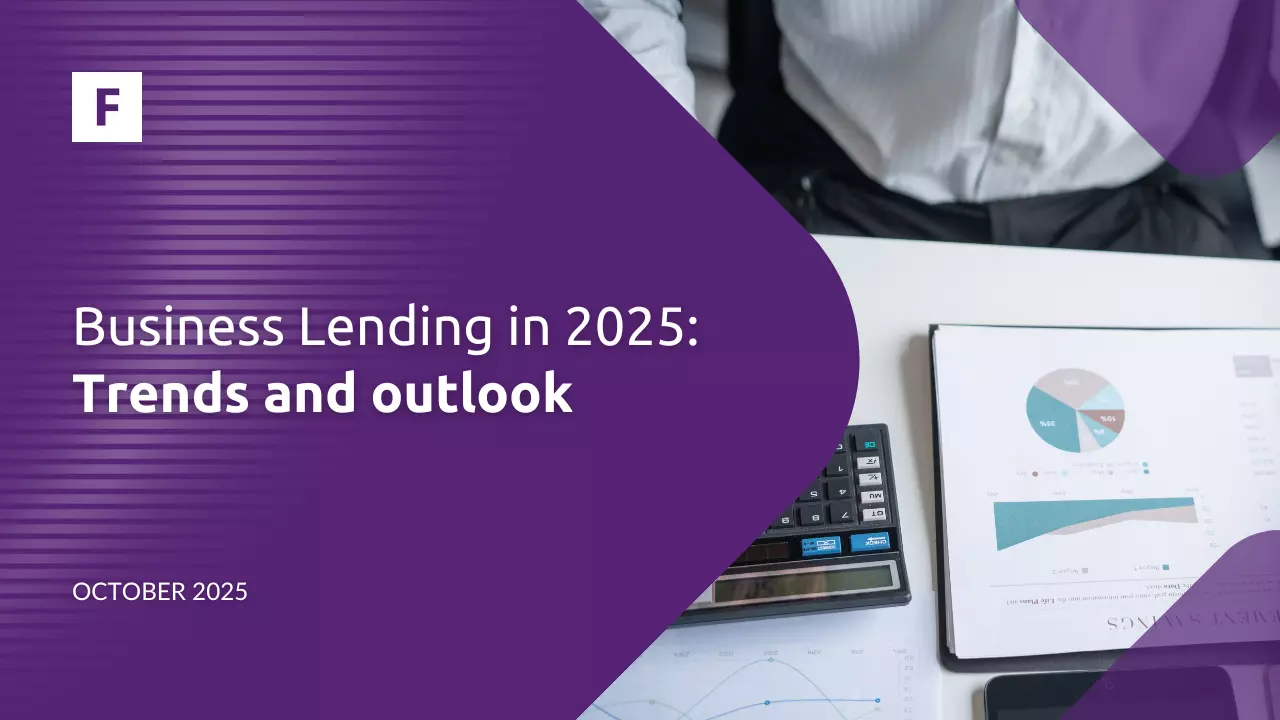The United Kingdom's financial market remains a dynamic hub of global commerce, with London standing out as a leading financial capital. Despite ongoing challenges such as high inflation and high energy prices, the market exhibits resilience and adaptability, underscored by regulatory frameworks and a diverse range of financial institutions.
Emphasis on sustainability and responsible investing is growing, alongside ongoing technological innovations reshaping traditional business models. Additionally, the lending market plays a crucial role, facilitating access to capital for businesses and individuals, and further fueling economic growth and development.
The Rise of Nonbanking Lenders in the UK
The lending landscape in the UK is rapidly evolving. Traditional lenders like Lloyds, NatWest, Barclays, Santander UK, and HSBC have long dominated the market, offering mortgages and consumer loans, but this has been changing lately, as legacy banks are losing their market share. In 2009, 92% of consumers had their accounts at traditional banks. A decade later, the same rate was 70%. The reason for this is the emergence of challenger banks, which are reshaping the industry. These banks are providing a convenient alternative to traditional banking. Challenger banks are considered a comfortable banking alternative, with banking apps that save time and money being significant drivers for fintech adoption. This has led many consumers to switch to these banks recently, favoring mobile banking over traditional physical branches. Prominent challenger banks include N26, OakNorth Bank, and Starling Bank. On top of convenient mobile banking, nonbanking lenders that offer stress-free customer experience tend to put more effort into customer lifecycle management, providing them personalized offers based on their behavior and profile. Customer experience is the key to success.
The UK's fintech industry stands out as a powerhouse, hosting over 1,500 high-growth companies. Notable players in this thriving sector include Checkout.com, Revolut, Monzo, SumUp, and Atom. The UK's fintech sector is experiencing rapid growth, positioning itself as a leader in the global financial technology revolution. Advanced technologies like AI, blockchain, and machine learning drive innovation, improve security, and enhance efficiency in financial transactions. Moreover, the rise of digital currencies is expected to reshape the future of fintech in the UK, offering faster, more efficient, and accessible financial transactions for a wider audience. To get started with simplifying digital lending processes take a look at Fintech Market's SaaS platform to learn about how to start your fintech company using modern SaaS software.
Loan Solutions for UK Borrowers
Top-tier lenders in the UK employ short-term loan management software as a powerful tool in their arsenal. Credit line software offers computer-assisted lending, which helps short-term lenders operationally. Softwares also store records and audit information which provide proof of responsible lending practices. In conclusion -- short-term lending software focuses on 10 key criteria including defining loan types, customizing lending rules, validating borrower data, integrating with credit and payment providers, sourcing loan products, managing affiliates, ensuring compliance, exchanging information, and enabling customer self-service. For a more comprehensive overview of loan management, take a look at our core management system.
The mortgage industry in the United Kingdom stands out as exceptionally innovative and competitive globally. Mortgage statistics from the fourth quarter of 2023 show that residential mortgage loans dipped by 0.1% to £1,657.6 billion, with gross mortgage advances declining by 13.4% to £54.0 billion. New mortgage commitments also decreased by 6.6% to £46.0 billion. The proportion of lending to high loan-to-income ratio borrowers decreased by 2.6 percentage points to 42.7%. On the other hand, outstanding mortgage balances with arrears spiked by 9.2% to £20.3 billion. Bigger local mortgage lenders, including Nationwide Building Society, HSBC, Santander, and NatWest, all have reduced their mortgage rates this year. Trimmed rates could help property market transactions. "The major lenders want to tilt the balance back towards purchase clients, especially as the housing market is on a bounce-back," said Stephen Perkins, managing director at Yellow Brick Mortgages.
With Fintech Market's FTM Mortgage software, you can configure various types of mortgage products you want to offer. Establish the product with either fixed or adjustable values for amounts, interest rates, and terms, and determine rules for managing penalties and grace periods. Additionally, address interest rate calculations, specifying whether rates are determined daily, monthly, or annually and whether they are variable or fixed.
Consumer lending involves providing funds for personal, family, or household expenses, often through unsecured loans. Consumer loans in the United Kingdom are typically used for various purposes such as paying bills, buying goods, acquiring vehicles or furniture, and funding home improvements. Gross new consumer lending has seen a gradual increase over the past decade, with a notable decline at the onset of the COVID-19 pandemic. Consumer credit issuance also decreased during the 2007 economic crisis, though at a slower rate. Despite the challenges, there is anticipation of a resurgence in consumer lending in the United Kingdom, driven by economic recovery and improving consumer confidence.
According to the latest statistics, consumer finance grew by 2% in January compared with the same month a year back. Primary reasons for this include growth in the credit cards and personal loans sector. The UK's new consumer credit market is expected to grow by 2% in 2024 to reach £360 billion. The biggest players in this market include the above-mentioned Barclays, Santander, and Lloyds Bank. For managing consumer loans Fintech Market offers you FTM software. Our consumer lending system helps lenders in offering small-scale loans and other financial products to individuals and businesses who lack access to traditional banking services.
In the past decade, the landscape of small business lending has undergone significant transformation. Alternative finance providers, in addition to traditional banks, now serve businesses previously underserved or unable to access funding. Rather than competing, these providers complement traditional banks, expanding options and improving accessibility and suitability of finance for smaller businesses.
Borrowing for Cars is Blooming
It's becoming more and more common among UK drivers to borrow for financing car purchases. In 2024, £56,6 billion is expected to be borrowed for car finance, marking a significant increase from the £11.2 billion borrowed in 2009, representing a 405% rise. The market is expected to grow to £77.9 billion by 2029. However, the rising popularity of electric vehicles could shape how new cars are financed as the taxation rate for EVs is much lower compared to petrol and diesel cars. EVs will maintain their benefit-in-kind advantage at least until the year 2028.
The trend that plays a crucial role in the market is low interest rates. Low rates positively impact the car loan market, making borrowing more affordable. This encourages more individuals to finance their car purchases, leading to increased demand for both new and used vehicles. Lower interest rates result in decreased monthly loan payments, making car loans more accessible to consumers.
Currently, over one million vehicles in the UK are powered by electricity. Furthermore, there are about 645,000 plug-in hybrids. Nearly 315,000 battery-electric cars were registered in 2023, which marks 18% growth since 2022. In March 2024, 15.2% of all new car registrations were electric vehicles. However, it is important to note that, in the UK, registering EVs in March and September is cheaper compared to other months. As of March, there were around 1,730,000 plug-in cars but their market share has been declining year on year while people are shifting towards battery-electric vehicles.
The Situation for Smaller Businesses is Refining
Louis Taylor, CEO of British Business Bank, says there's been a significant change in the small businesses finance market since 2014: "There have been 36 new banking licenses granted to banks serving smaller businesses since 2014." After uncertain times caused by economic shocks, the COVID-19 pandemic, supply chain shortages, and high energy prices caused by the invasion of Ukraine and inflation, the market has started to bloom again. "Whilst it is disappointing to see recent declines in bank lending and equity finance for smaller businesses in 2023, reflecting the challenging economic conditions, it is encouraging to see asset finance has grown 7% in 2023, a third consecutive annual increase," said Taylor.
Fintech Market offers SME lending software designed to streamline processes for companies seeking credit. It enables financial institutions and private lenders to provide reliable service, simplifying the lending process compared to traditional banks. Our platform efficiently handles loan applications, origination, servicing, payments, and reporting through its credit decision-making engine.
Looking Ahead
Moreover, the overall perspective for finance in the UK appears promising, extending beyond just the fintech sector. Experts from Baker McKenzie believe in a brighter outlook for the UK finance sector. However, challenging macroeconomic and geopolitical conditions have prompted borrowers in the leveraged finance market to seek alternative options.
The most challenging times after the 2008 financial crisis have brought up uncertainty and the threat of recession but some optimism has risen in the UK since June 2023. As inflation declined to 7.9% due to a significant decrease in fuel prices, and further dropped to 6.7% in September, expectations of Bank of England interest rate hikes eased.
The latest EY ITEM Club UK Bank Lending Forecast predicts a marginal 0.8% net growth in UK bank-to-business lending for 2024. Despite marking an improvement over the previous year's contraction, businesses in the UK display resistance to acquire debt amid constant economic uncertainties both domestically and internationally, worsened by high borrowing costs. However, a notable rebound to 3.5% net growth is anticipated for 2025. Anna Anthony, UK Financial Services Managing Partner at EY, said: "If borrowing costs and interest rates fall as expected, by next year we expect market confidence to have lifted markedly." This might stimulate business confidence and appetite for borrowing.
Overall, growth of 3.5% (net) is forecast in 2025 -- the highest growth since 2020 when the Government announced loan support during COVID-19. Growth is then forecast to rise 3.2% (net) in 2026 as GDP growth and interest rates stabilize. Anthony expresses optimism about the future: "Bank lending to UK businesses is expected to lift substantially from 2025."
Economic Climate is Improving
EY ITEM Club projects business loan write-off rates to rise to 0.22% in 2024 due to increased borrowing costs, up from 0.14% in 2023 but still well below early 2010s levels. Predictions anticipate impairments to decrease to 0.18% in 2025 and 0.15% in 2026 if borrowing rates decline as expected. Dan Cooper, UK Head of Banking and Capital Markets at EY, said: "While the economic climate is expected to improve this year, it will take some time to filter through the system and make a material difference to consumer and business sentiment. Despite this, banks must ensure that time, money, and resources continue to flow into key areas to remain competitive, such as AI innovation and sustainability."
Alternative Sources of Capital are Ascending
One such is direct lending. Over the last five to ten years, the private credit market in the UK and Europe has experienced significant growth. Specifically, in the past decade, it has grown six times its size. The term "private credit" encompasses various products, including direct lending, distressed investing, special situations, and mezzanine and venture debt. Direct lending is the largest category at approximately 44% of the asset class. Direct lending engages directly with borrowers, bypassing intermediaries like investment banks. Additionally, direct lenders are showing interest in expanding into new regions, notably emerging markets.
One is certain: the UK's finance sector is evolving rapidly. Traditional banks are facing challenges from non banking lenders, and fintech is making advancements focusing on sustainability. After recent uncertainties involving high energy prices and inflation, the situation for consumers is steadily improving. Rates are decreasing, and the housing market is refining, presenting opportunities for both consumers and lenders. Embracing innovation and staying informed about emerging trends will be crucial for navigating the UK market successfully.
About Fintech Market
Fintech Market (FTM) operates in the lending software market, offering a comprehensive SaaS-based loan management system for financial service providers. It includes essential features such as CRM, KYC, risk management, and debt management for loans, deposits, current accounts, and investments. With tailored solutions to optimize their operations, FTM serves neobanks, SMEs, car leasing companies, and buy-now-pay-later companies in the EU, Mexico, and Indonesia.







